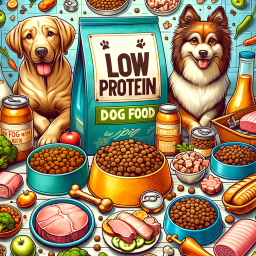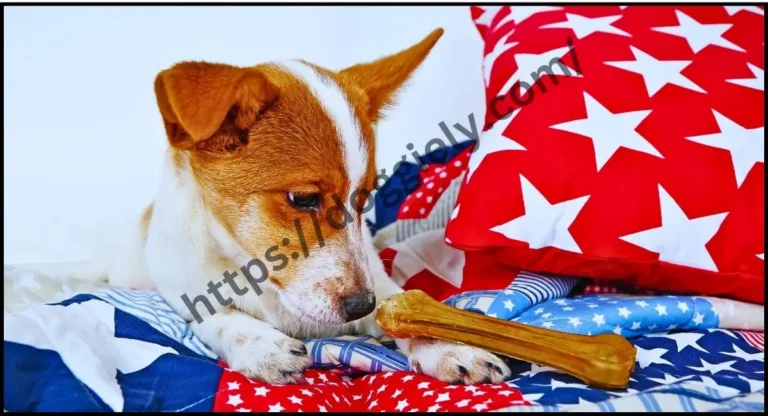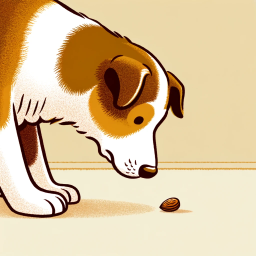Can Dogs Have Pork Rib Bones? Debunking Myths

When it comes to feeding dogs, many pet owners wonder about the safety of pork rib bones. It’s a common question with important implications for your dog’s health and well-being. This article gives a detailed answer to the question ”Can Dogs Have Pork Rib Bones?”
The History of Dogs and Bone Chewing: An Evolutionary Perspective
The practice of dogs chewing bones is deeply rooted in their evolutionary history, dating back to their ancestors in the wild. Understanding this history provides insight into the natural behaviors and dietary preferences of modern dogs.
Origins in the Wild
- Ancestral Wolves: Dogs evolved from wolves, which are natural carnivores. In the wild, wolves consume their prey entirely, including bones, to fulfill their nutritional needs.
- Nutritional Benefits: Bones provide essential nutrients such as calcium, phosphorous, and marrow, which were crucial for the survival and health of these ancestral canines.
Evolution into Domestication
- Early Domestication: As dogs were domesticated by humans, their diet started to change. However, the instinct to chew bones remained, as it was a natural part of their ancestral diet.
- Dental Health: Chewing bones in the wild helped keep the teeth of wolves clean and sharp. This benefit carried over to domesticated dogs, for whom chewing is also a natural dental care activity.
Modern-Day Perspectives
- Behavioral Aspects: Beyond nutrition, bone chewing satisfies a dog’s instinctual urges to gnaw and chew, which is important for their mental health and well-being.
- Changes in Diet and Health: Modern dogs have different dietary needs compared to their wild ancestors. While bone chewing is instinctual, the types of bones and the way they are prepared (cooked vs. raw) can pose health risks.
The Anatomy of a Dog’s Digestive System and Bone Digestion
Understanding the anatomy of a dog’s digestive system is key to comprehending how they process and digest bones. This brief overview highlights the main components of the canine digestive system and their role in bone digestion.
Overview of the Canine Digestive System
- Mouth and Teeth: Dogs have a set of teeth designed for tearing meat and crushing bones. Their powerful jaws and sharp, pointed teeth (canines and premolars) are crucial for breaking down food, including bones.
- Esophagus: This muscular tube transports chewed food from the mouth to the stomach. Large or sharp bone fragments can cause damage or obstruction here.
- Stomach: The dog’s stomach has strong acids and digestive enzymes. It is more acidic than a human’s, which helps in breaking down tougher food like bones. However, not all bones can be digested efficiently, leading to potential risks.
- Small Intestine: Nutrients are absorbed here. While the dog’s stomach acid can break down bones to some extent, indigestible fragments can pass into the intestine, potentially causing blockages or injury.
- Large Intestine: This is where water is absorbed, and waste material is prepared for excretion. Indigestible bone fragments can cause constipation or irritation in this area.
Can Dogs Eat Raw Pork Rib Bones? Debunking Myths
The topic of whether dogs can eat raw pork rib bones is surrounded by various myths and misconceptions. This brief description aims to clarify the facts and debunk common myths associated with feeding raw pork rib bones to dogs.
Myth 1: “All Raw Bones are Safe for Dogs”
- Reality: Not all raw bones are safe. Raw pork rib bones, while less likely to splinter than cooked bones, still pose risks such as choking, intestinal blockages, and potential bacterial contamination.
Myth 2: “Raw Bones are Natural and Healthy for Dogs”
- Reality: While dogs have evolved to chew bones, this doesn’t necessarily make raw pork rib bones a safe option. The risk of diseases like salmonella and trichinosis from raw pork poses a significant health risk to both dogs and their human companions.
Myth 3: “Raw Pork Rib Bones Clean a Dog’s Teeth”
- Reality: While chewing can help maintain dental health, the risks associated with raw pork rib bones often outweigh the dental benefits. Safer dental chews are available that don’t carry the same health risks.
Myth 4: “Raw Bones Won’t Choke Dogs”
- Reality: Choking is a real risk. Dogs can choke on bone fragments, and even if they swallow them, these fragments can cause internal damage or obstructions.
Myth 5: “Raw Pork Rib Bones are Nutritious”
- Reality: While bones do contain some nutrients, the risk of harm from raw pork rib bones, including the potential for nutritional imbalances, makes them a suboptimal choice for nutrition.
Cooked vs. Raw Bones:
Here is a table comparing the characteristics of cooked versus raw bones in terms of dog safety:
| Aspect | Cooked Bones | Raw Bones |
|---|---|---|
| Risk of Splintering | Higher risk of splintering, which can lead to internal injuries. | Lower risk of splintering, but still present. |
| Nutritional Value | Nutrients are often lost during cooking. | More nutritious, as cooking does not deplete natural nutrients. |
| Risk of Bacterial Contamination | Lower risk due to the cooking process killing most bacteria. | Higher risk of bacterial contamination like salmonella or E. coli. |
| Digestibility | Less digestible, can cause constipation and other digestive issues. | More digestible than cooked bones, but still pose risks. |
| Choking Hazard | Higher, due to harder and more brittle nature. | Lower, but still a significant concern. |
| Dental Health | Can cause more dental problems like tooth fractures. | Less damaging, but risks of dental wear and tear remain. |
| Suitability for Dogs | Generally not recommended due to higher risks. | Can be suitable in some cases, but require careful selection and supervision. |
Dental Health: How Pork Rib Bones Can Affect Your Dog’s Teeth
Still on Can Dogs Have Pork Rib Bones? The impact of pork rib bones on a dog’s dental health is a topic of concern for many pet owners. Understanding how these bones can affect the teeth and gums of dogs is crucial for maintaining their overall oral health.
Risks to Dental Health
- Tooth Fractures: One of the primary risks of allowing dogs to chew on pork rib bones is the potential for tooth fractures. The hardness of the bones, especially when cooked, can cause the teeth to crack or break, leading to pain and the need for veterinary dental treatment.
- Gum Injuries: Sharp edges of bone fragments can injure a dog’s gums, leading to cuts, infections, and in some cases, more serious oral injuries.
- Wear and Tear: Regular chewing on hard substances like pork rib bones can cause excessive wear on a dog’s teeth over time, potentially leading to dental issues such as worn-down teeth and exposed nerve endings.
Misconceptions about Dental Benefits
- Cleaning Teeth: While it’s a common belief that chewing bones can help clean a dog’s teeth, the risks associated with pork rib bones often outweigh any potential dental benefits. There are safer alternatives available that effectively promote dental health without posing a risk to the teeth and gums.
Signs of Dental Problems
- Symptoms to Watch For: Symptoms of dental problems in dogs include difficulty eating, pawing at the mouth, drooling, bad breath, and visible damage to the teeth. If any of these symptoms are observed, it’s important to seek veterinary care.
Veterinary Advice and Care
- Preventive Measures: Veterinarians often recommend against giving dogs pork rib bones due to the associated dental risks. Regular dental check-ups, proper dental hygiene practices, and the use of vet-approved dental chews are recommended for maintaining good oral health in dogs.
Here is a table that summarizes the risks of feeding pork rib bones to dogs:
| Risk | Description |
|---|---|
| Choking Hazard | Bones can get lodged in the throat or intestines, leading to choking or obstruction. |
| Splintering and Internal Injury | Cooked bones can easily splinter, causing damage as they pass through the digestive system, potentially puncturing internal organs. |
| Digestive Blockages | Large bone pieces can become stuck in the intestines, causing blockages that may require emergency veterinary care. |
| Dental Problems | Chewing on hard bones can lead to cracked or broken teeth, resulting in pain and further dental issues. |
| Nutritional Imbalance | Pork rib bones do not provide significant nutritional benefits and can disrupt a balanced diet. |
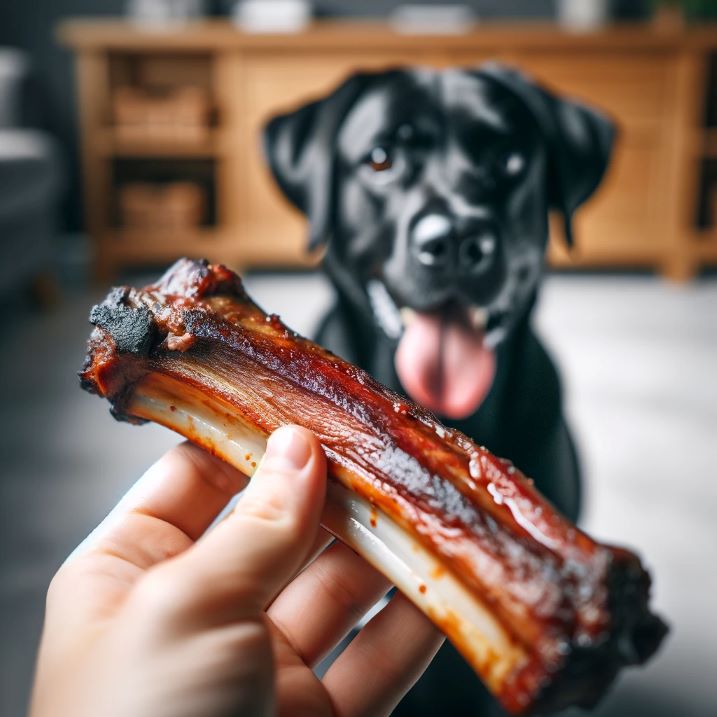
How to Respond to Aggressive Behavior Over Bones
Aggressive behavior in dogs over bones, often termed “resource guarding,” is a common issue many pet owners face. It’s crucial to understand and effectively respond to such behavior to ensure the safety of both the dog and those around it. Here’s a guide on how to handle this situation:
1. Understanding the Behavior
- Root Cause: Resource guarding is a natural instinct in dogs. It stems from their ancestral need to protect valuable resources like food.
- Signs: Growling, snarling, snapping, or stiffening up when approached while having a bone are common signs of aggression.
2. Stay Calm and Avoid Punishment
- Reaction: React calmly. Yelling or punishing the dog can escalate the aggression.
- Safety First: Ensure children and other pets are kept at a safe distance.
3. Do Not Forcefully Take the Bone
- Approach: Avoid grabbing or pulling the bone away, as this can provoke a bite or increase the dog’s guarding behavior.
- Trade-Up Technique: Offer a higher-value treat or toy as a trade for the bone.
4. Training and Desensitization
- Positive Reinforcement: Use treats to reward non-aggressive behavior. Practice approaching while the dog has a bone and reward calm responses.
- Desensitization: Gradually teach your dog that the approach of people to their resources is a positive event.
5. Seek Professional Help
- Behaviorist Consultation: If the aggressive behavior is severe or doesn’t improve, consult a professional dog trainer or animal behaviorist.
- Medical Check-Up: Sometimes aggression can be linked to medical issues. A veterinary examination can rule out any underlying health problems.
6. Preventive Measures
- Safe Environment: Feed your dog in a quiet, secure place where they don’t feel threatened.
- Limit High-Value Items: Avoid giving bones or other high-value items until the behavior is under control.
First Aid: What to Do If Your Dog Eats a Pork Rib Bone
It’s not uncommon for dogs to get their paws on things they shouldn’t eat, including pork rib bones. While these bones can pose serious health risks, knowing the right first aid steps can be crucial. Here’s what to do if your dog eats a pork rib bone:
1. Remain Calm and Assess the Situation
- Observe your dog closely for any immediate signs of distress, such as choking, gagging, or difficulty breathing.
2. Do Not Attempt to Induce Vomiting
- Avoid inducing vomiting unless specifically instructed by a veterinarian, as this can cause additional harm.
3. Check for Mouth or Throat Obstructions
- If you can do so safely, check your dog’s mouth and throat for bone fragments. Be cautious, as dogs in distress may bite.
4. Offer Soft Foods
- Feeding a small amount of soft, high-fiber food like canned pumpkin or wet dog food can sometimes help encapsulate sharp bone fragments, aiding their passage through the digestive tract.
5. Monitor Your Dog
- Watch for symptoms like excessive drooling, pawing at the face, vomiting, bloody stool, lethargy, or abdominal pain. These could indicate internal blockages or injuries.
6. Contact Your Veterinarian
- Even if your dog seems fine initially, it’s important to contact your veterinarian for advice. They may suggest monitoring at home or bringing your pet in for an examination.
7. Be Prepared for Veterinary Intervention
- In some cases, X-rays or other diagnostic tests may be necessary to assess whether the bone has caused an obstruction or internal injury. Surgery may be required in severe cases.
8. Prevent Future Incidents
- Take steps to ensure bones and other hazardous items are kept out of your dog’s reach in the future
Alternative Safe Chews to Pork Rib Bones for Dogs
Chewing is a natural and necessary behavior for dogs, important for their dental health and psychological well-being. However, finding safe ways to satisfy this urge is crucial to prevent risks associated with inappropriate chewing items like certain bones or household objects. Here’s a look at various safe alternatives:
1. Rubber Chew Toys
- Durability: High-quality, durable rubber toys are excellent for vigorous chewers. They’re designed to withstand strong jaws while being gentle on teeth.
- Safety: Ensure these toys are non-toxic and appropriately sized to prevent swallowing or choking.
2. Dental Chews and Treats
- Oral Health Benefits: Specially formulated dental chews can help reduce plaque and tartar buildup, promoting healthier teeth and gums.
- Nutrition: Some dental treats are also designed to provide additional nutritional benefits.
3. Rawhide Alternatives
- Natural Options: There are safer alternatives to rawhide, such as bully sticks or dried sweet potato chews, that are less prone to splintering.
- Supervision Required: Always supervise your dog with these chews to ensure they don’t bite off large pieces that could cause choking.
4. Interactive Chew Toys
- Mental Stimulation: Toys that can be filled with treats or peanut butter not only satisfy the chewing urge but also provide mental stimulation.
- Engagement: These toys keep dogs engaged for longer periods, helping to prevent boredom and destructive behavior.
5. Rope Toys
- Dental Floss Effect: Rope toys can act like dental floss, helping to clean between teeth.
- Supervised Play: Ensure these toys are robust and monitor your dog to prevent them from ingesting any fibers.
6. Nylon Bones
- Long-Lasting: Nylon bones are a safe alternative for dogs who are heavy chewers. They are designed to last longer than traditional chews.
- Variety: Available in various sizes and flavors to cater to different preferences.
Pork Rib Bones and Allergies in Dogs: What to Watch Out For
While pork rib bones are often a debated topic in terms of physical safety for dogs, it’s also important to consider the potential for allergic reactions. Like humans, dogs can have allergies to certain foods, including pork. Here’s what dog owners need to know about pork rib bones and allergies in dogs:
1. Identifying Pork Allergies
- Symptoms: Allergic reactions in dogs can manifest as skin irritations (itching, redness), gastrointestinal issues (vomiting, diarrhea), or respiratory problems. If your dog exhibits these symptoms after consuming pork rib bones, an allergy could be the cause.
- Diagnosis: A veterinarian can conduct tests to confirm whether your dog is allergic to pork.
2. Risk of Allergic Reaction to Bones
- Pork Meat Residue: Even if the bone itself isn’t the allergen, pork rib bones often have meat and marrow residue, which can trigger an allergic response in sensitive dogs.
- Secondary Allergens: Flavorings or seasonings on the bones can also pose a risk for allergic reactions.
3. Managing an Allergic Reaction
- Immediate Action: If you suspect your dog is having an allergic reaction, remove the bone and observe their symptoms.
- Veterinary Care: In the case of severe reactions, immediate veterinary attention is necessary. Treatments may include antihistamines, steroids, or other medications.
- Dietary Adjustments: If an allergy is diagnosed, your vet will recommend a diet excluding pork and potentially other related allergens.
4. Preventive Measures
- Avoidance: The simplest way to prevent allergic reactions is to avoid giving your dog pork rib bones and other pork-based products, especially if they have a known sensitivity.
- Alternative Treats: Opt for hypoallergenic or single-ingredient treats to minimize the risk of allergic reactions.
Dog Breeds and Bone Chewing: What Owners Should Know
Here is a table analyzing 20 different dog breeds and their characteristics related to bone chewing:
| Dog Breed | Chewing Strength | Risk of Dental Issues | Recommended Bone Type | Supervision Required |
|---|---|---|---|---|
| Labrador Retriever | Strong | Medium | Rawhide Alternatives | Yes |
| German Shepherd | Very Strong | High | Nylon or Strong Rubber | Yes |
| Golden Retriever | Strong | Medium | Rawhide Alternatives | Yes |
| Bulldog | Moderate | Medium | Soft Chew Toys | Yes |
| Beagle | Moderate | Low | Dental Chews | Yes |
| Poodle | Moderate | Low | Dental Chews | Yes |
| Rottweiler | Very Strong | High | Nylon or Strong Rubber | Yes |
| Yorkshire Terrier | Light | Low | Soft Chew Toys | Yes |
| Boxer | Strong | Medium | Rawhide Alternatives | Yes |
| Dachshund | Moderate | Medium | Dental Chews | Yes |
| Siberian Husky | Strong | Medium | Nylon or Strong Rubber | Yes |
| Doberman Pinscher | Very Strong | High | Nylon or Strong Rubber | Yes |
| Great Dane | Very Strong | High | Nylon or Strong Rubber | Yes |
| Miniature Schnauzer | Moderate | Medium | Dental Chews | Yes |
| Shih Tzu | Light | Low | Soft Chew Toys | Yes |
| Australian Shepherd | Strong | Medium | Rawhide Alternatives | Yes |
| Cavalier King Charles Spaniel | Light | Low | Soft Chew Toys | Yes |
| Shetland Sheepdog | Moderate | Medium | Dental Chews | Yes |
| Basset Hound | Moderate | Medium | Dental Chews | Yes |
| Cocker Spaniel | Moderate | Medium | Dental Chews | Yes |
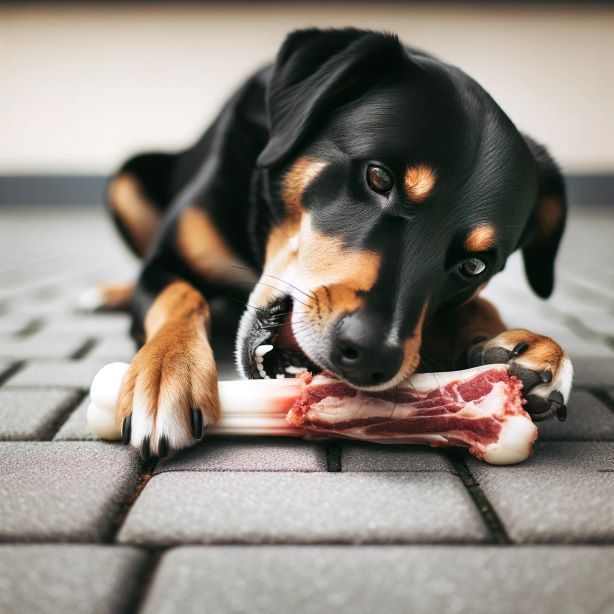
Homemade Dog Treat Alternatives to Pork Rib Bones
For dog owners looking to provide their pets with safer and healthier treat options than pork rib bones, homemade dog treats are an excellent alternative. These treats can be tailored to your dog’s dietary needs and preferences, and you have the added benefit of knowing exactly what goes into them. Here’s a look at some homemade dog treat alternatives:
1. Peanut Butter and Pumpkin Treats
- Ingredients: Combine natural peanut butter (without xylitol), pureed pumpkin, eggs, and whole wheat flour to create a dough.
- Preparation: Cut into shapes and bake until crispy. These treats are a favorite for many dogs and provide a good source of fiber and protein.
2. Sweet Potato Chews
- Ingredients: Use thin slices of sweet potato.
- Preparation: Bake the slices at a low temperature until they’re chewy. They are a great source of vitamins and are easier on the digestive system than bones.
3. Chicken Jerky Strips
- Ingredients: Thinly sliced chicken breast.
- Preparation: Slow bake in the oven until they are dried but not brittle. These provide a high-protein, low-fat snack.
4. Frozen Yogurt and Berry Bites
- Ingredients: Mix plain yogurt with blueberries or strawberries.
- Preparation: Freeze the mixture in ice cube trays for a cool and refreshing treat, especially in the warmer months.
5. Homemade Bone Broth
- Ingredients: Simmer bones (with any meat removed) with water, carrots, and celery.
- Preparation: Strain and freeze the broth in ice cube trays. Serve as a liquid treat or add to meals.
6. Oat and Apple Dog Cookies
- Ingredients: Whole wheat flour, rolled oats, unsweetened applesauce, and egg.
- Preparation: Combine ingredients, roll out dough, cut into shapes, and bake. These are a great alternative to store-bought biscuits.
Conclusion
The question of ”Can Dogs Have Pork Rib Bones?” is a complex one, requiring consideration of various health risks and nutritional factors. Based on the insights from veterinary experts, case studies, and an understanding of canine dietary needs, the general consensus is one of caution.
- Health Risks: Pork rib bones, whether cooked or raw, pose significant health risks to dogs. These risks include choking hazards, potential for intestinal blockage, risk of splintering and causing internal injuries, dental damage, and possible bacterial contamination.
- Veterinary Advice: The majority of veterinarians advise against giving pork rib bones to dogs. Their recommendations stem from observed complications and the inherent risks associated with these bones.
- Alternative Options: There are safer alternatives to pork rib bones that satisfy a dog’s chewing instinct. These include specially formulated chew toys, dental treats, and other safer, more digestible options.
- Individual Dog Considerations: While individual dogs may react differently, the risks associated with pork rib bones are generally applicable to all breeds and sizes. It’s important for owners to consider their specific pet’s health, chewing habits, and dietary needs.
- Owner Responsibility: Dog owners should prioritize their pet’s safety and well-being by making informed choices about their diet. Regular consultations with a veterinarian can help determine the best dietary practices for each individual dog.
faq
1. Can Dogs Eat Pork Rib Bones?
- Answer: It is generally not recommended for dogs to eat pork rib bones. Cooked bones, including pork ribs, can splinter easily and pose a choking hazard or cause damage to the dog’s mouth, throat, or digestive tract.
2. What Are the Risks of Feeding Pork Rib Bones to Dogs?
- Answer: The risks include choking, blockages in the digestive system, splinters causing mouth or internal injuries, and the potential for bones to cause constipation or damage teeth.
3. Can Dogs Chew on Raw Pork Rib Bones?
- Answer: While some argue that raw bones are safer than cooked bones, they still carry risks such as bacterial contamination (like Salmonella), potential for intestinal blockage, or choking hazards.
4. What Should I Do If My Dog Eats a Pork Rib Bone?
- Answer: If your dog eats a pork rib bone, watch for signs of distress, such as choking, gagging, drooling, vomiting, or changes in bowel movements. Consult your veterinarian immediately if any of these symptoms occur.
5. Are There Safer Alternatives to Pork Rib Bones for Dogs?
- Answer: Yes, safer alternatives include specially designed chew toys, dental chews, and rawhide alternatives that are made to be safe and digestible for dogs.
6. Can Pork Rib Bones Cause Intestinal Blockage in Dogs?
- Answer: Yes, pork rib bones can cause intestinal blockage, especially if the dog breaks off large pieces and swallows them. This is a serious condition that may require surgical intervention.
7. How Can I Safely Satisfy My Dog’s Urge to Chew?
- Answer: Provide your dog with safe chew toys or chews that are designed to be digestible and do not splinter. Always supervise your dog while they are chewing.
8. What Are the Symptoms of Bone Splinters in Dogs?
- Answer: Symptoms of bone splinters can include coughing, gagging, drooling, vomiting, bloody stool, and abdominal pain. Immediate veterinary attention is necessary.
9. Can Pork Rib Bones Cause Dental Problems in Dogs?
- Answer: Yes, pork rib bones can cause dental problems like cracked or broken teeth due to their hardness.
10. Should I Consult My Veterinarian Before Offering Bones to My Dog?
Answer: Yes, it’s always a good idea to consult with your veterinarian before introducing any new type of chew or bone to your dog’s diet.
Related posts
Read more: Why do dogs hide their treats? Understanding Canine Behavior
Read more: Can Dogs Eat Almonds?Understanding the Risks
Read more: Can Dogs Have Brown Sugar? 7 Effects
